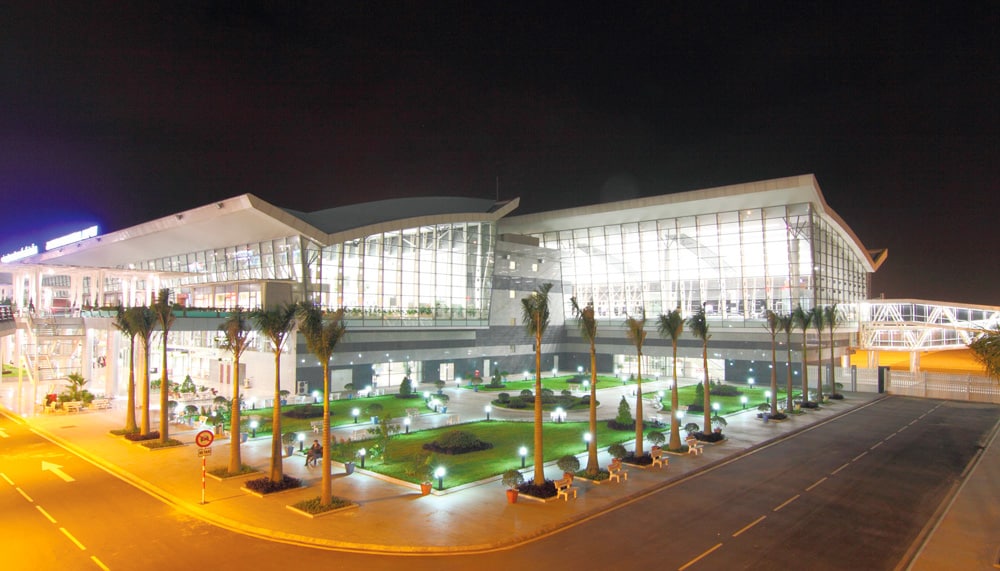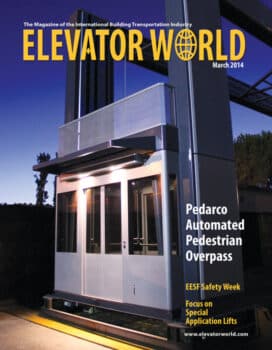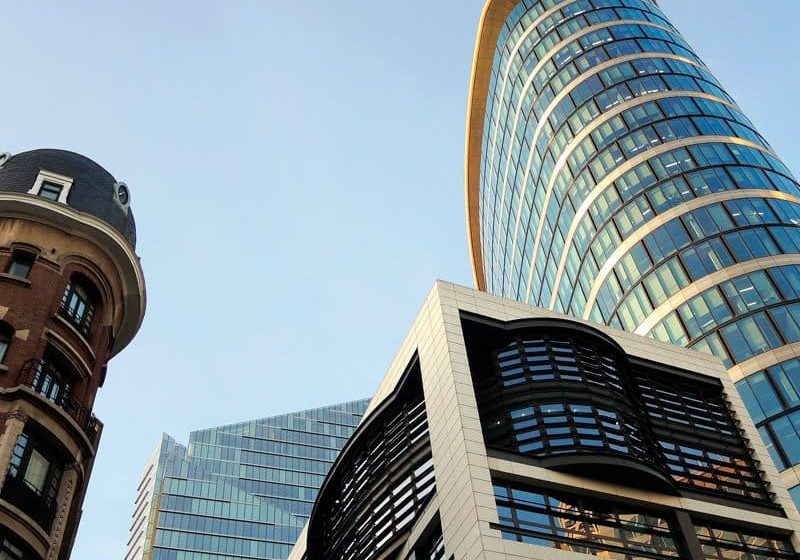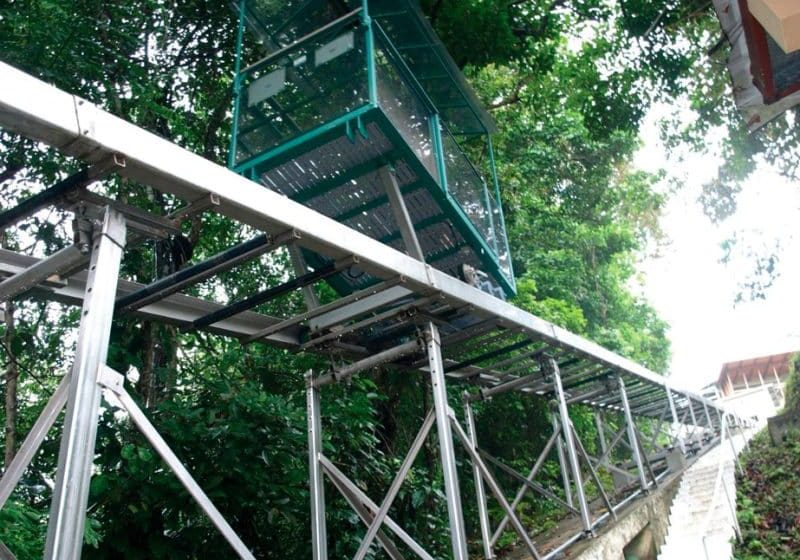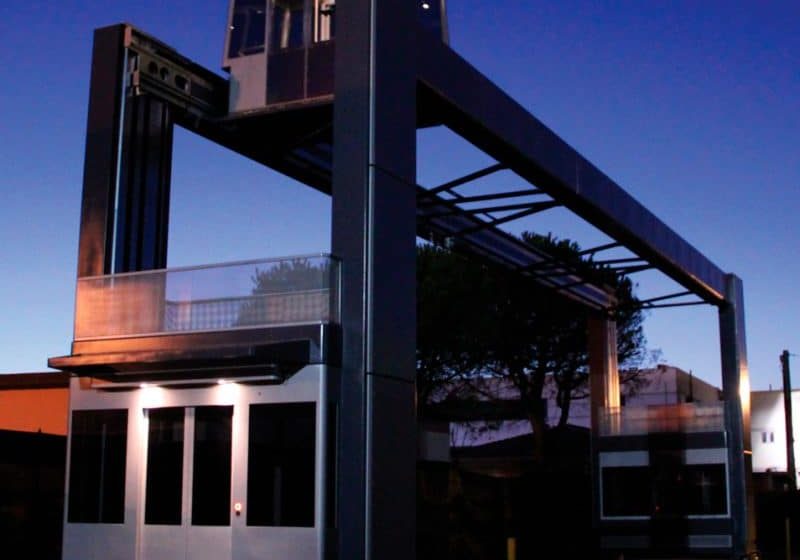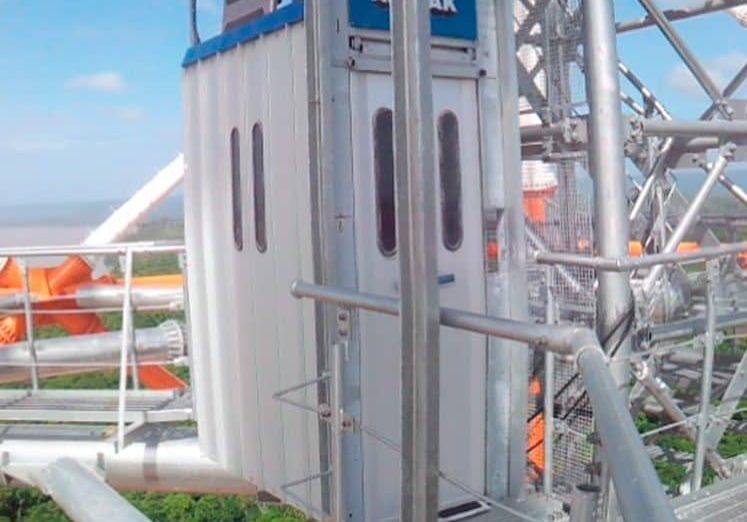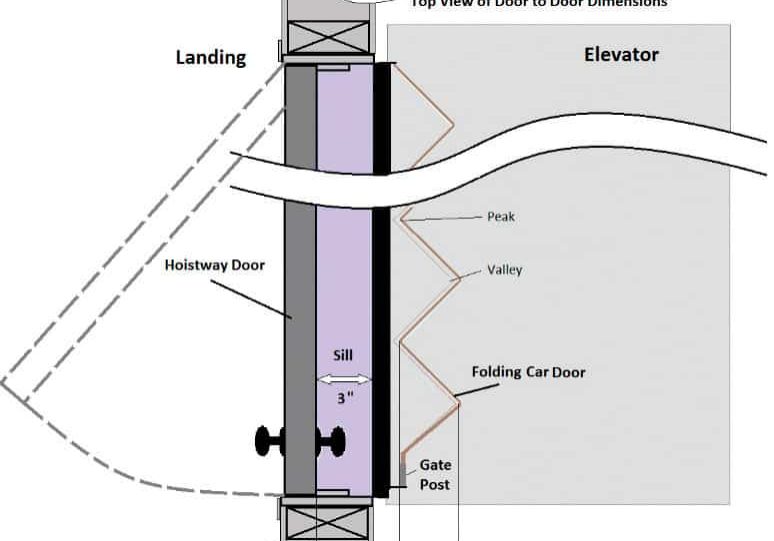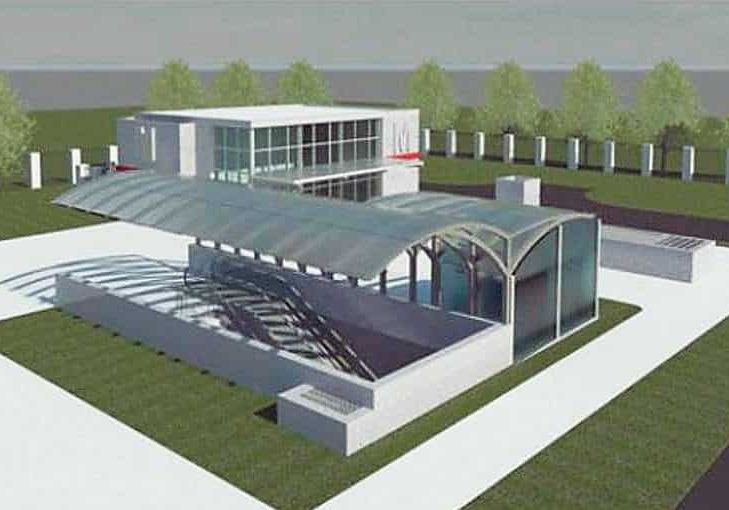As its economy continues to industrialize, the small nation with a rich past and bright future offers many opportunities
Culturally rich, densely populated and financially healthy, Vietnam continues to shift from an agriculture- to an industry-based economy. Demand for elevators and escalators is on the rise as the country modernizes, and elevator manufacturers are laying the groundwork so they can continue to feed demand. Foreign trade is increasing and companies — particularly technology firms — are expanding, thanks in part to Vietnamese lawmakers’ proactive approach: the country joined the World Trade Organization in 2007 and became an official negotiating partner in the Trans-Pacific Partnership Trade Agreement in 2010.[1]
Major elevator companies have served the market for decades — Otis, for example, installed its first elevator in Vietnam in 1929 at the Presidential Palace in Hanoi. More recently, Otis installed 14 passenger and two freight elevators in the 262.5-m, 68-story Bitexco Financial Tower in Ho Chi Minh City, which until 2011 was the tallest building in Vietnam. Otis is hardly alone, as skyscrapers are multiplying in Vietnam’s urban centers, providing plenty of business to go around.
“The past decade has seen a period of very exciting growth in the elevator and escalator market in Vietnam,” notes Sarvesh Malhotra, director, South Region (comprising Thailand, Vietnam, Indonesia and Cambodia), for Jardine Schindler Group. He continued: “The combined factors of economic growth, rapid urbanization, shifting family structure and growing property investments have fueled demand for all property segments, from low-rise apartments to high-rise offices.” Schindler began operating in Vietnam in 1995 and currently serves this market out of its headquarters in Ho Chi Minh City, with branches in Ha Noi and Da Nang, as well as representatives in Can Tho, Hai Phong and Nha Trang. Jardine Schindler imports, installs and maintains units primarily in the nation’s urban centers. Schindler opened a Vietnam factory in 1998 to produce brackets, beams and elevators for both the domestic and export markets.
“In the next five years, our company will further deepen our commitment to this market and expand geographically to meet the demands of the continued construction growth and enable Schindler to further enhance service levels to its customers,” said Malhotra.
Among Schindler’s Vietnam projects:
- In Ho Chi Minh City, residential towers Saigon Pearl; shopping mall Vincom Center A; and hotel/apartment building Saigon M&C Tower
- In Hanoi, the Lotte Centre (which, upon completion, will be Vietnam’s third-tallest skyscraper at 267 m); and Indochina Plaza, both mixed-use developments
Manufacturers Seek Greater Capacity, Control
In September 2013, Mitsubishi Electric acquired additional shares of its elevator/escalator joint venture Melco Elevator Vietnam Co., Ltd. to convert it to a subsidiary, bringing all functions — sales, installation, maintenance and distributorship — under one roof. The move, according to Mitsubishi Electric, enabled the company to “expand its operations in the growing market of Vietnam and to centralize control over product safety and quality.” Mitsubishi Electric estimates it holds approximately 20% of the Vietnam market.
Doing business in Vietnam since 1973, Mitsubishi Electric has provided units for facilities such as the Sheraton Saigon Hotel & Towers and Tan Son Nhat International Airport in Ho Chi Minh City. With Toan Tam Engineering Co., Ltd., it established Melco in 2008 to handle sales, installation and maintenance, forging a distributorship agreement with Thang Long TLE Group. Mitsubishi Electric has approximately 600 elevator employees in Vietnam, with headquarters in Ho Chi Minh City.
KONE appointed Thien Nam Elevator Stock Co. its distributor for sales, installation and maintenance of KONE equipment in 2006. In 2009, KONE expanded with the opening of a fully owned subsidiary and, today, has several branches in Vietnam. “With leading global resources and expertise at our disposal, KONE is ready to serve the needs of clients in all segments and is well positioned to contribute to the successful development of Vietnam,” stated Michiel de Moel, regional managing director for KONE in Vietnam, Indonesia and the Philippines.
ThyssenKrupp Elevator founded its first branch in Vietnam in 2003. “There is still a lot of potential to expand and improve the market,” notes Scarlett Wan, marketing/communications manager for ThyssenKrupp Elevator AG Asia Pacific. The company currently has approximately 200 employees in Vietnam, and, since 2003, has completed numerous notable projects. Among them:
The Hyatt Regency Complex in Danang, 19 elevators
A tower in the Trung Hoa-Nhan Chinh resident area in Hanoi, 53 elevators
Danang International Airport, six escalators, 11 elevators
The Vincom Center retail complex in Ho Chi Minh city, 24 escalators, five elevators
The mixed-used, 336-m-tall Keangnam Hanoi Landmark Tower (currently the tallest building in Vietnam), 72 elevators
“Today, our branch network consists of 13 locations to provide experienced and dedicated engineers and technicians close to our customers as part of our service strategy,” Wan stated.
Bright Spots and Challenges
Despite relatively stable macroeconomics,[2] Vietnam faces challenges. Although the economy grew in 2013, it was at one of the slowest paces in 14 years.[3] Vietnam’s exports were particularly affected by the global economic recession. In 2012, Gross Domestic Product grew at 5%, the slowest pace since 1999.[1] Domestic economic reforms have been reluctant to take root, and Vietnam’s banking industry continues to struggle with bad debt. That has hindered lending, particularly for real estate.[3]
Despite challenges, Vietnam’s exports continue to grow at a double-digit pace, and foreign investors continue to pour money into the country.[2] One quality that appeals to corporations looking to set up shop in Vietnam is low-cost labor.[4] Exports of cell phones and related parts saw a huge surge in 2012, thanks in large part to South Korean cell-phone giant Samsung, which produced approximately US$1 billion per month of exports in 2012[5] and accounted for 98% of Vietnam’s mobile-phone exports.[6] In 2012, exports of mobile phones and accessories grew 161.5% year-on-year to US$3 billion during the first four months of 2012, making the market the second biggest behind traditional exports such as crude oil, garments and footwear.[5] That trend looks to continue with Samsung continuing to invest heavily.
In 2009, Samsung spent US$700 million on its first Vietnamese manufacturing plant, which has done a robust export business with the value of exports topping US$12 billion in 2012, versus US$7 billion in 2011. Based on the success of this initial plant, which has realized a remarkable US$17 return on every dollar invested[7], Samsung is building another in north Vietnam at a cost of US$3.2 billion.[7] In addition to Samsung, the country has about 500 local and foreign electronics enterprises, including Finnish phone maker Nokia, which opened a Hanoi City factory in spring 2013.[5]
Vietnam packs a powerful punch for its size. At 331,210 km2, it is the world’s 65th-largest nation in terms of land mass but the 13th largest in terms of population — approximately 92 million.[8] Although still a major rice and coffee producer, Vietnam’s agricultural economic output has continued to contract. For example, it shrunk from 25% in 2000 to 22% in 2012.[1] Industry’s share grew from 36% to 41% over the same period.[1]
Elevator companies are, for the most part, bullish on Vietnam. States Schindler’s Malhotra:
“We expect the economy will lift moderately in 2014, with construction activities mainly supported by the low- to mid-rise residential segment and some commercial developments. Vietnam will continue to be a key market for Schindler in the years to come.”
Vietnam Facts[1]
- Population: 92 million
- Per-capita GDP: US$3,600
- GDP makeup: industry, 40.8%; services, 37.6%; agriculture, 21.6%
- Unemployment rate: 4.3%
- Population below poverty line: 11.3%
References
[1] CIA World Factbook (www.cia.gov/library/publications/the-world-factbook/geos/vm.html)
[2] The World Bank, “An Update on Vietnam’s Recent Economic Development July 2013: Key Findings,” July 12, 2013.
[3] Deloitte University Press Asia Pacific Economic Outlook Vietnam, “Vietnam: Not Out of the Woods Yet,” October 2013.
[4] Time, “Abandoning China: In Search of Cheap Labor, Businesses Turn to Vietnam,” Pierre Tiessen, July 5, 2011.
[5] ZDNet, “Vietnam Mobile Phone, Accessories Exports Hit $3B,” Kevin Kwang, May 16, 2012.
[6] Intellasia East Asia News, “Samsung Vietnam Accounts for 98% of Vietnam’s Mobile Phone Export in 2012,” January 12, 2013.
[7] Tech in Asia, “Samsung Pours Another $3.2 Billion Into Vietnam,” Anh-Minh Do, March 26, 2013.
[8] CIA World Factbook (www.cia.gov/library/publications/the-world-factbook/geos/vm.html)
[9] Council on Tall Buildings and Urban Habitat,
(skyscrapercenter.com/create.php)
Get more of Elevator World. Sign up for our free e-newsletter.
